The chazir/chazer/pig is perhaps the most familiar example that comes to mind when we consider non-kosher animals. In a sense, the chazer is a one-of-a-kind animal, standing out from the others listed in this week’s parshah as the representative of proscribed items. Two primary simanim (indicators) are required to render an animal permissible for consumption: their feet must be split, and they must chew their cud. A number of animals (e.g. camels, rabbits) are deemed unsuitable, for although they chew their cuds, they lack the other qualification. The chazer is distinct in that it is the only animal that possesses the requisite split feet, but falls short in the cud-chewing category.
Unlikely Companions
Now, Rabbeinu Bechaye makes a most eye-opening assertion regarding the Torah’s singling out of the chazer; as it states: אֶת־זֶה לֹא תֹאכְלוּ מִמַּעֲלֵי הַגֵּרָה וּמִמַּפְרִסֵי הַפַּרְסָה… וְאֶת־הַחֲזִיר כִּי־מַפְרִיס פַּרְסָה הוּא… וְהוּא גֵּרָה לֹא־יִגָּר – “The following you may not eat from those who chew their cud or possess split feet… And the chazer, for while it does split its feet… it does not chew its cud” (Vayikra 11:7). In his commentary, Rabbeinu Bechaye understands that there is actually another animal that is subsumed by this passuk’s directive. This is the dog, who apparently – like the chazer – does possess a form of split feet, but also does not chew its cud.
Interestingly enough, we actually do find a number of areas where these two animals share a certain unique attribute. These similarities run the gamut. On a practical level, we find that they are singled out as being problematic to raise, as the Mishnah places restrictions on both of them (Bava Kamma 7:7):
אֵין מְגַדְּלִין חֲזִירִים בְּכָל מָקוֹם, לֹא יְגַדֵּל אָדָם אֶת הַכֶּלֶב אֶלָּא אִם כֵּן הָיָה קָשׁוּר בְּשַׁלְשֶׁלֶת.
“One may not raise pigs in any location. A person may not raise a dog unless it is restrained by a chain.”
But in a broader sense, we find that both are considered to be of the most contemptible creatures, strongly associated with utmost defilement. This also carries some practical ramifications, as we find in a few places that Chazal go out of their way to avoid even calling the chazer by name, referring to it simply as “davar acheir” (literally: the “other thing”) (Shabbos 129a). The sefer Ma’aseh Ish (biography of the Chazon Ish) recounts a related incident involving a dog. Once, there was a dog in the proximity of the Chazon Ish, which he asked to be removed from the premises. But in issuing these instructions, instead of pronouncing the (Hebrew) term for dog (“kelev”), he merely spelled out the word (“remove the kaf-lamed-veis”).
What this speaks to, in a more general sense, is the extreme repulsiveness associated with both of these creatures. This quality, of course, is legendary when it comes to the chazer. It is no coincidence that Shlomoh Hamelech, employing one of his famous parables, selects this animal when portraying an imagery of sharp contrast. Thus, he speaks of a “nezem zahav b’af chazir – golden ring in the nose of a pig” (Mishlei 11:22) to invoke a portrait of utmost irony: the most beautiful and valuable item on the snout of one of the dirtiest creatures – an animal that roots around in the mud and refuse. And for its part, a dog is likewise relegated to a position of extreme degradation from among all creatures. Kabbalistic literature especially casts it in a most negative light, viewing the dog as the embodiment of ritual defilement. For example, the mystical Shabbos hymn “B’nei Heichala” (composed by the Arizal) uses the term “kalbin da’chatzifin – brazen dogs” to refer to the kochos ha’chitzonim (spiritual forces of impurity).
On the Positive Side…
There is, to be sure, another quite interesting quality that both of these creatures share, and that relates to the prospect for future improvement and eventual rectification. Now, this factor may be somewhat more well known when it comes to the chazer and was actually the focus of an early Mishnas Chayim article (Re’eh 5768). We learned there that the Medrash (quoted by the Ritva to Kiddushin 49b) understands that the name חֲזִיר actually derives from the root ,חזר which means “to go back”; for in the future, it will revert to being a permissible item for Yisrael. This is not to say, chas v’shalom, that a law of the Torah will change, but rather, as the Chasam Sofer explains, that the nature of the chazer itself will change. That is, the chazer of the future will actually acquire the characteristic of chewing its cud.
R’ Yechiel Michel Stern points out that the dog seems to share this same future (cf. Yalkut Shimoni § 187). Chazal’s work known as Perek Shirah lists the various creatures and the unique songs of praise that they sing to Hashem. Interestingly enough, the dog is listed at the end, and his shirah (song) consists of the passuk: בֹּאוּ נִשְׁתַּחֲוֶה וְנִכְרָעָה נִבְרְכָה לִפְנֵי ד’ עֹשֵֹנוּ – “Come, let us prostrate, bow, and bless before Hashem Who has made us” (Tehillim 95:76).
It is most significant that the dog is listed at the end, for this reflects the period of Acharis Ha’yamim, the End of Days. At that time, the universe will be spiritually elevated and perfected, reaching the state of its Tikkun Hagamur (Ultimate Rectification). We learned earlier that the dog is the embodiment of the kochos hatumah, the spiritual forces of impurity and darkness. Thus, this particular selection reveals that at the time of the Tikkun Hagammur, even these nefarious forces shall be rectified and transformed into agents of service and praise of Hashem. As such, even the dogs at that time will recognize Hashem and proclaim: “Come, let us prostrate, bow, and bless before Hashem Who has made us” (Otzar Yedi’os, vol. I, p. 502).
In any event, while we have seen the similarities shared by these two creatures, there are certain significant differences, as well. In fact, as we shall see next week b’ezras Hashem, a key distinction is reflected by the two adjacent parshiyos of Shemini and Tazria.







